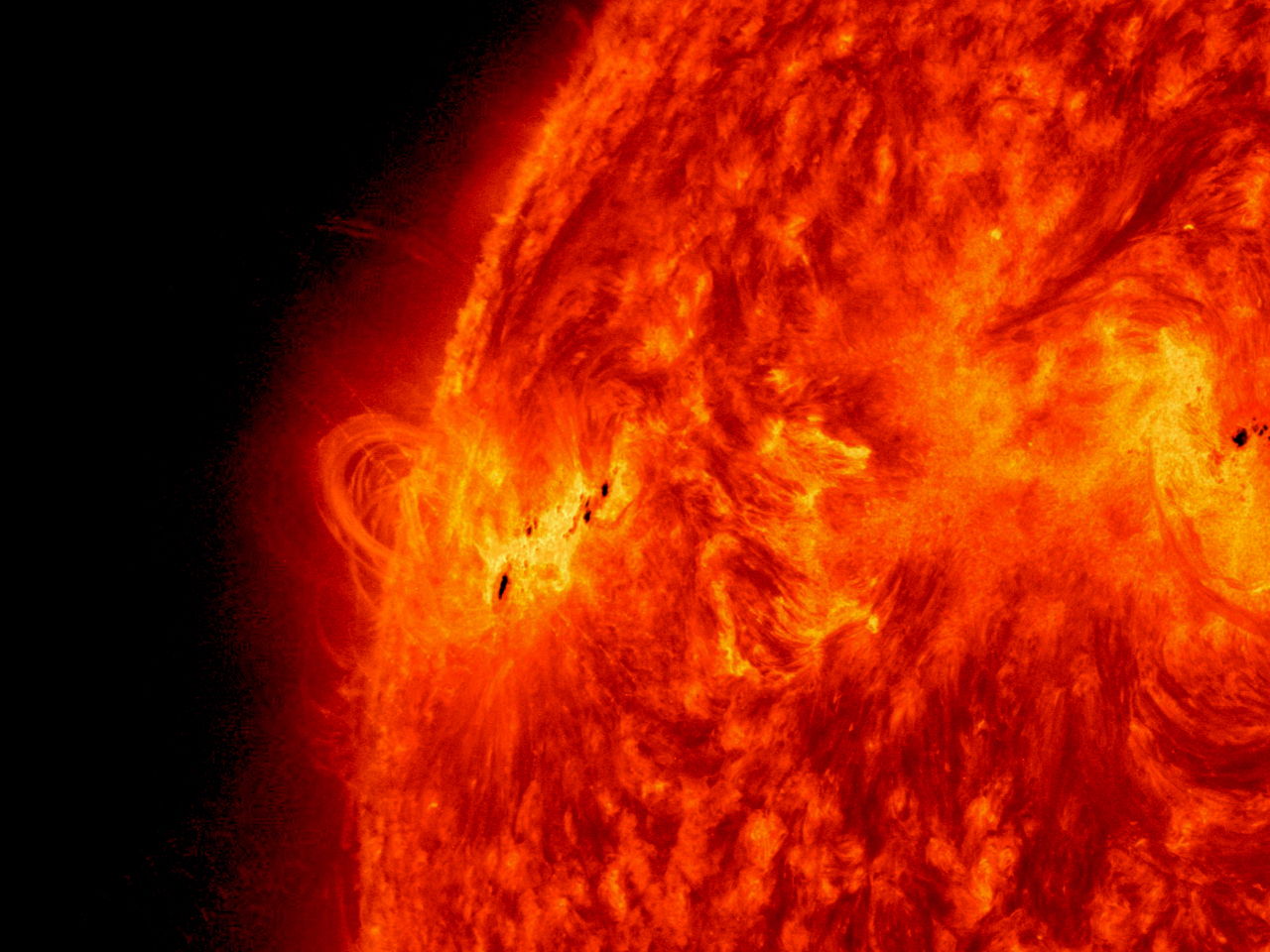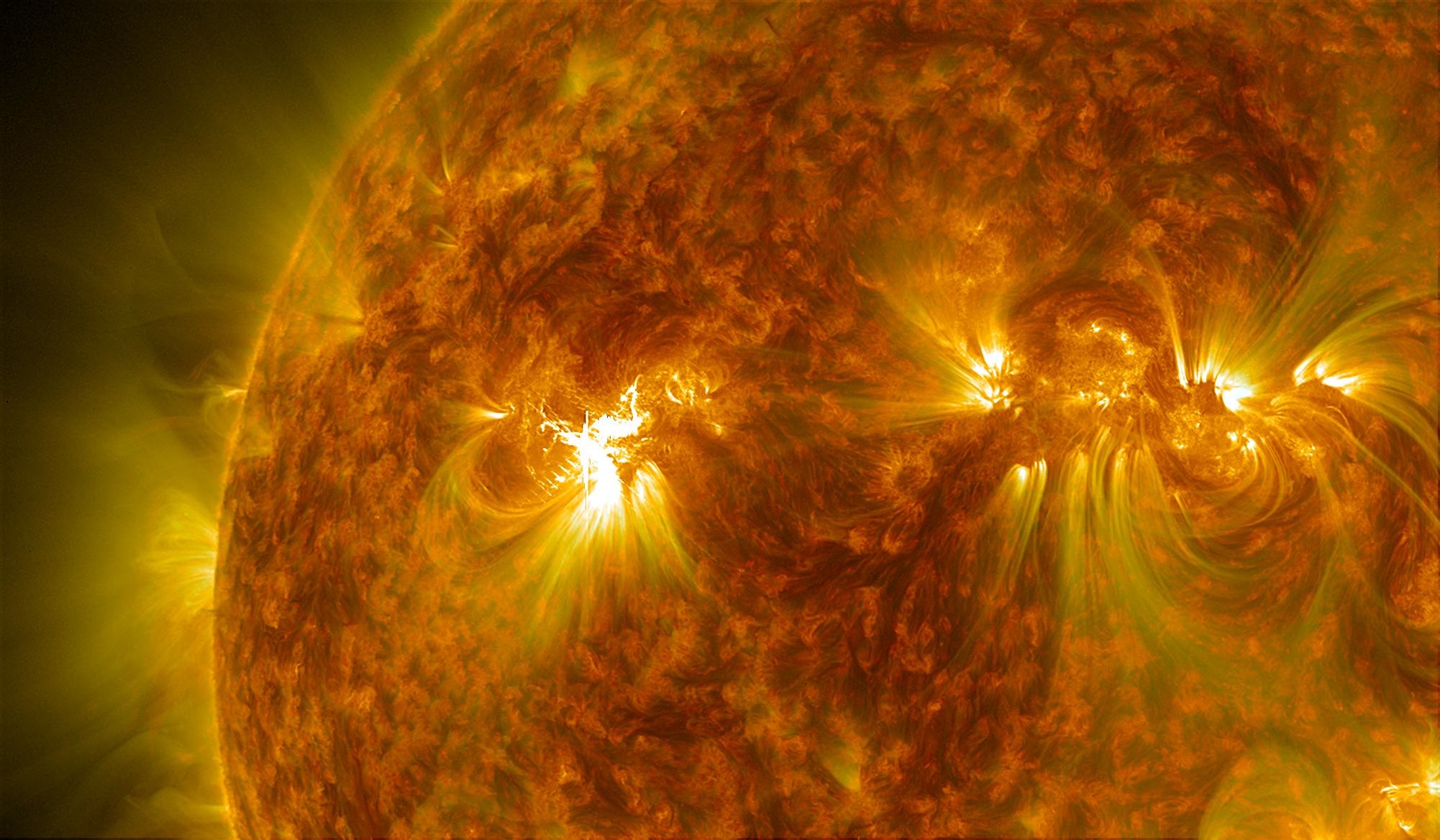Fallout from Huge Solar Flare Sideswipes Earth Today

A huge explosion on the sun will deal Earth a glancing blow today (May 17) but should not pose a threat to the planet, scientists say.
The sun storm erupted late Tuesday (May 14) during a powerful solar flare — the fourth unleashed by a single sunspot in just 48 hours — and hurled a massive cloud of charged particles out into space at millions of miles an hour.
Such eruptions — known as coronal mass ejections, or CMEs — can wreak havoc if they hit Earth squarely, temporarily disrupting GPS navigation, satellite communications and power grids. But this one isn't aimed directly at us, so there's no cause for alarm, experts say. [Sun Unleashes Biggest Flares of 2013 (Photos)]
Space weather forecasters with the U.S. National Oceanic and Atmosperic Administration "estimate a 40 percent chance of polar geomagnetic storms when the cloud arrives," astronomer Tony Phillips wrote today on Spaceweather.com, a website that tracks skywatching and space weather events.
"High-latitude skywatchers should be alert for auroras tonight," Phillips added.
The solar flare associated with Tuesday night's CME registered as an X-class flare, the most powerful type. It was the fourth X flare unleashed by a sunspot known as AR1748 since Sunday night (May 12).
While incredibly powerful, Tuesday's flare actually was the weakest of the four rapid-fire X flares, clocking in at X1.2. The previous three registered as X1.7, X2.8 and X3.2 flares, respectively. Those three all occurred while AR1748 was facing away from Earth, however, so they did not affect our planet.
Breaking space news, the latest updates on rocket launches, skywatching events and more!
AR1748 is currently rotating toward Earth and should be lined up with us more or less directly by Saturday (May 18), researchers say. And the sunspot is still busy, firing off two medium-strength M flares over the past two days.
Scientists classifly strong solar flares into three categories, with C being the weakest, M intermediate and X the most powerful.
X-class flares can cause long-lasting radiation storms in Earth's upper atmosphere and trigger radio blackouts. M flares can cause brief radio blackouts in the polar regions and occasional minor radiation storms, while C flares have few noticeable consequences. Strong solar flares can also supercharge Earth's auroras, creating dazzling northern lights displays.
The sun is currently in an active period of its 11-year solar weather cycle and is expected to reach peak activity later this year. The current cycle, known as Solar Cycle 24, began in 2008.
Scientists have been tracking sunspots, solar flares and other space weather events since they were first discovered in 1843. Today, an international fleet of spacecraft keeps constant watch on the sun's activity.
Follow Mike Wall on Twitter @michaeldwall and Google+. Follow us @Spacedotcom, Facebook or Google+. Originally published on SPACE.com.

Michael Wall is a Senior Space Writer with Space.com and joined the team in 2010. He primarily covers exoplanets, spaceflight and military space, but has been known to dabble in the space art beat. His book about the search for alien life, "Out There," was published on Nov. 13, 2018. Before becoming a science writer, Michael worked as a herpetologist and wildlife biologist. He has a Ph.D. in evolutionary biology from the University of Sydney, Australia, a bachelor's degree from the University of Arizona, and a graduate certificate in science writing from the University of California, Santa Cruz. To find out what his latest project is, you can follow Michael on Twitter.

